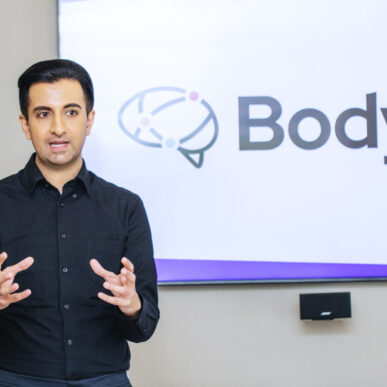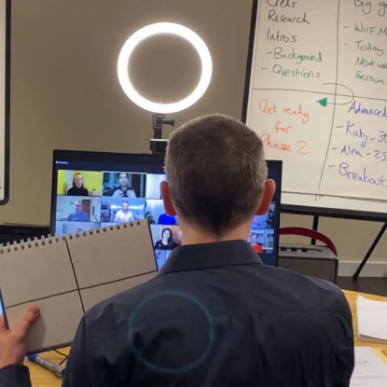The Mask And The Message – How Face Masks Impact Communication
Here’s looking at you: Did you know your face has the most dexterous muscles in the animal world – making you capable of transmitting huge amounts of information without saying a word?
The fact is you communicate best when you’re talking face-to-face. This is because facial expression is one of the primary means of letting others know how you feel, and it is a crucial tool for building trust and rapport with your partner, your colleagues, your clients or, as US healthcare workers found, even your patients.
The experience of doctors and nurses in the US during the pandemic is an interesting case. Being in hospital is terrible; add the anxiety caused by your carers shrouded in full-body PPE, and it can become traumatic.
The answer? Fast-thinking doctors and nurses began pinning photos of their smiling faces to their uniforms with the effect of easing patient anxiety.
Of course, it’s not just US medical teams who are wearing PPE right now. The face mask has become synonymous with Covid-19, and its pictogram brands public spaces around the globe, like the tag of a frenzied graffiti artist.
How face masks impact communication
A recent study published in the journal Frontiers In Psychology asked participants to identify which of 6 emotional states (Angry, Disgusted, Fearful, Happy, Neutral and Sad) were represented in randomly selected images, some of which were obscured by typical face masks (see the image below).
The study showed the participants were able to identify the unmasked emotions with a high level of confidence and accuracy.
Here’s the interesting bit: When the faces were masked, identifying the emotional state was affected by how much information was being communicated by the eyes.
In the case of Fearful, the characteristic widening of the eyes made it easier to identify. When the eyes were less expressive, participants became much more uncertain, with Neutral often being mistaken for Happy and Sad, while Disgusted was often confused with Angry.
How do we compensate?
Psychologists from Royal Holloway University in London explain how humans tend to process faces as a whole. It turns out when the face is partially covered by a mask this processing is disrupted, leading to confusion. Since the eyes and the mouth are the most expressive components of the human face, we’re unlikely to be getting the whole story if either of them is obscured.
While you might think “the eyes are the window to the soul,” my mother knew better – when she caught me fibbing – and said, “the truth is written all over your face.”
Understanding the limits face masks are placing on our innate ability to communicate non-verbal signals, the question is, how can we compensate?
Here are three tips to help you counter the effect of the face mask in your meeting.
Use More Vocal Range
Business meetings often suffer from monotonous delivery, leaving the audience confused and unsure how they should feel about the message. In the past, using facial expressions could rescue these situations; this safety net has gone. Masks, mask.
The way to go then is this: Decide how you want your audience to feel and use your voice as a tool to convey it. Make your pitch congruent with your message. Pace how quickly or slowly you speak. Use pauses to highlight important points. Introduce emotion.
Remember vocal dynamic stimulates the people you are talking with. Audiobooks do just this by taking the audience on an emotional journey, without the need for visuals. You should do this too.
On a more practical level, know the face mask will affect the clarity of your speech. The solution is good articulation and a bit more volume than usual – it’ll make all the difference.
Use Your Body
You’re more than just a pretty face. In fact, two of the best visual aids at your disposal are beside you right now – your arms! Gesturing adds clarity and emphasis. For example, a palms-up gesture at the beginning of a meeting is just as welcoming as a smile; coupling a serious statement with a palms-down gesture will give it weight.
In much the same way, your posture is a useful guide for your audience, so consider what it is telling them. If you want to seem confident and in control, adopt a strong, centred stance. If you want to appear empathetic or open to collaboration, a more relaxed, off-centre posture might be best.
Be Curious
Communication is a two-way street, so it’s important to be aware of the messages your audience are sending you. If you can’t clearly see their faces, be curious and look for clues elsewhere. Are they nodding or making affirming sounds? Is their eye contact skittish or more focussed? Does their posture seem relaxed or tense?
Being attentive to your audience provides valuable insights into how they are feeling. Understanding this means you can adapt to their needs, leading to a more productive interaction.




















